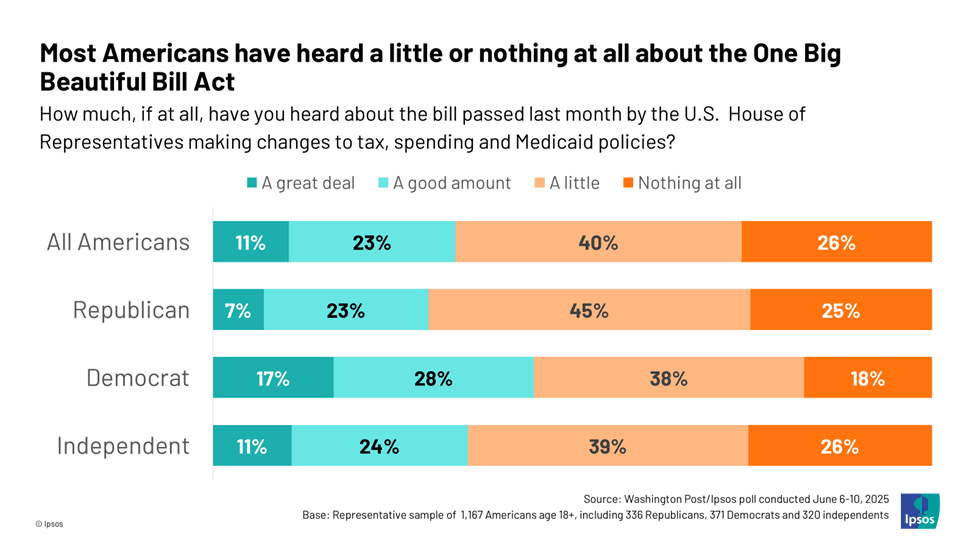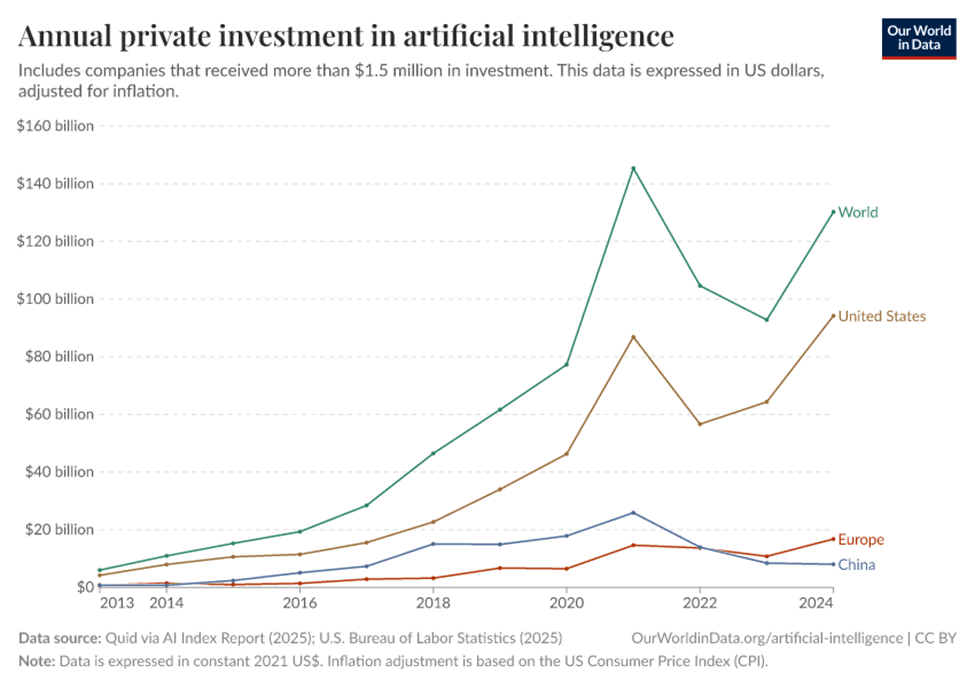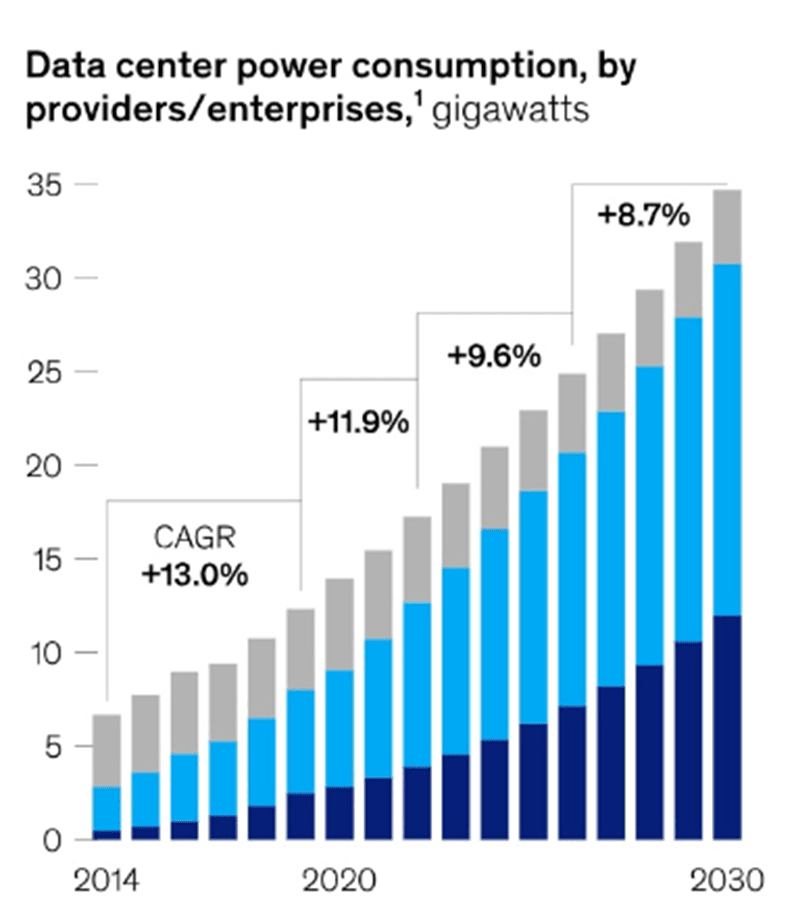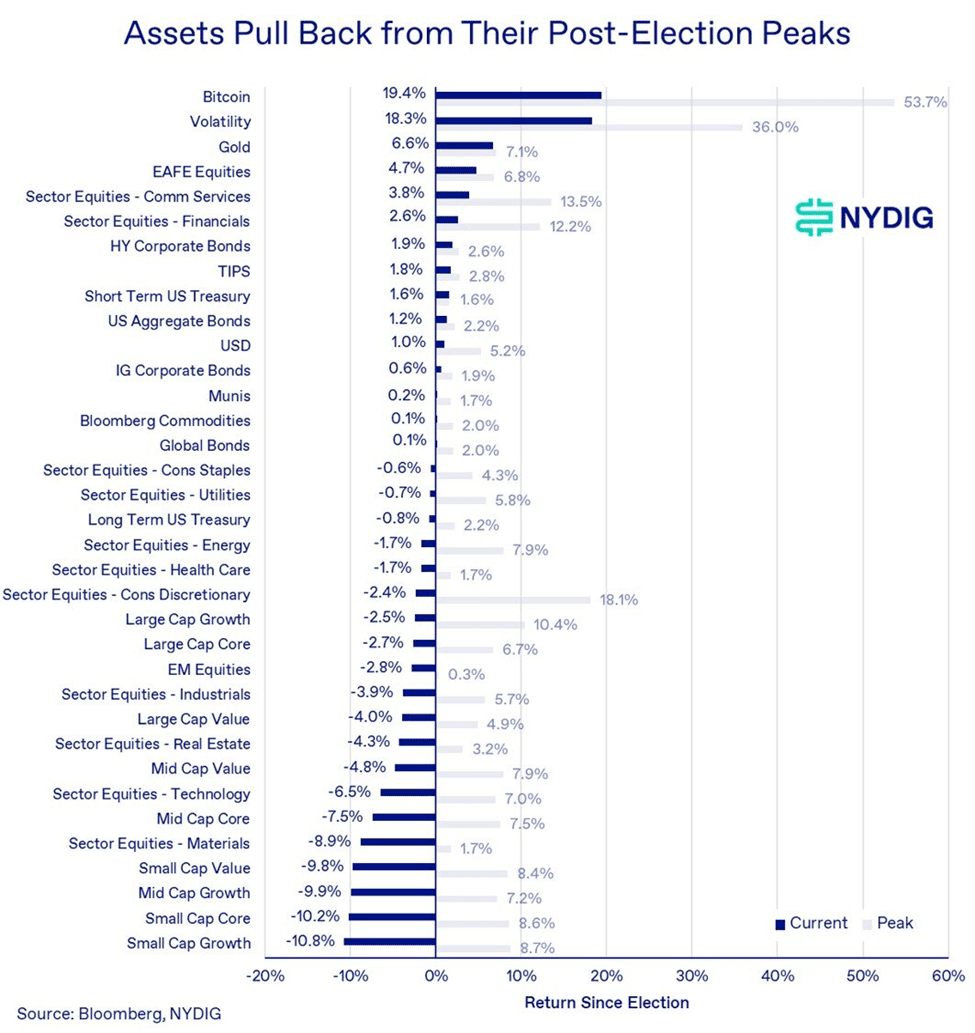One Big Beautiful Bill Effects on Alternative Investments
One Big Beautiful Bill Effects on Alternative Investments
By: Peter Frerichs
July 18, 2025
Insight Highlights
- An AI infrastructure renaissance awaits
- Nuclear is set for take-off
- Crypto assets gaining popularity
- Renewable energy to struggle
President Trump made it through his first 100 days with a bang. In an environment as politicized as the United States, the President’s supporters might place him in the pantheon of the nation’s most preeminent leaders, while his detractors are gearing up for another march to express their displeasure.
As the Administration emerged in late April, the President readied himself for an impending economic throwdown with his “One Big Beautiful Bill Act.” The President and Republicans were in a rush to get the big beautiful bill signed into law, but flare-ups domestically and abroad had most Americans paying attention elsewhere. In fact, just a month ago, well over half had heard little or nothing at all about the bill.

Source: Ipsos. June 18, 2025. “Latest U.S. opinion polls.”
What You Need to Know
The sprawling legislation was signed into law by the President’s self-imposed July 4 deadline. In a nutshell, like most bills, there are hundreds of pages of uninspiring text to weed through. But the big beautiful bill has some interesting takeaways that will impact investment decisions and markets at large. In our estimate, there are four major takeaways to keep an eye on.

AI Investments
The Administration is all-in on AI. On the energy front, they’ve freed up previous regulatory burdens that hampered data center expansion. Meanwhile, tech companies have been cozying up to private credit firms seeking funding for the continued rollout.

The Carlyle Group estimates that over $1.8 trillion of capital will be directed to meet AI infrastructure demands by 2030. Asset-backed bonds or traditional real estate debt will cover some, but private credit will occupy a large chunk.1 While previous versions of the bill had included a pause on state AI regulations that were ultimately removed, unencumbered by regulatory snafus, private investments in AI are expected to surge over the coming years.

The Big Beautiful Bill Likes Nuclear
The big beautiful bill “nuked” many clean energy incentives, but spared nuclear by not rolling back the 2022 Inflation Reduction Act (IRA) provisions. Investment and Production Tax Credits (ITC and PTC) were preserved for new nuclear projects, coupled with a nuclear production credit for existing plants.2 As countries worldwide struggle to keep pace with growing energy demands, nuclear energy is back in play. The Department of Energy released an exciting funding initiative of $900 million to support the development of small modular reactors (SMRs). The initiative covers two tiers:3
- First Mover Support – Up to $800 million available for projects deploying a Gen III+SMR program by early 2030.
- Fast Follower Deployment Support – Up to $100 million to bolster licensing, site selection, and supply chain development for Gen III+SMR deployments.
Artificial intelligence (AI) datacenters are power-hungry beasts, and the sector’s projected growth over the coming years explains why private equity investment in a power source as potent as nuclear hit $783.3 million in 2024 - eclipsing the previous 15 years combined.4

Source: Rocco, Andrew. September 23, 2024. “5 Reasons Why 2025 Will See a Nuclear Energy Revival.” Nasdaq.
In late June, New York Governor Kathy Hochul announced plans to construct the first new U.S. nuclear plant in over a decade. Microsoft received support to restart an undamaged reactor at Pennsylvania’s Three Mile Island power plant, and increased interest in SMR development has the potential to drive costs substantially lower.5

Crypto on a Roll
Estimates point to the big beautiful bill increasing federal deficits by roughly $3.4 trillion over the next decade.6 The U.S. debt is a massive burden on the long-term growth projections of the country, and as inflationary pressures still loom, with the yield on 10-year Treasurys in the 4.30% range, the famous Ray Dalio once posited that governments have four tools at their disposal in a scenario like this:7
- Austerity
- Defaults
- Redistribution
- Printing Money
Of the four, most governments resort to the last - printing money. As the nominal value of cash and Treasuries erodes, cryptocurrencies, such as Bitcoin, benefit.

Post-election, Bitcoin outperformed all major global assets. Everything is back from their “peaks,” but over 244 companies now hold Bitcoin on their balance sheets.8 The sector received another boost when Federal Reserve Chair Jerome Powell shared his support for crypto legislation recently before Congress:9
"Our view is that banks get to decide who their customers are. Banks are also free to conduct crypto activities, as long as they do so in a way that is protective of safety and soundness."

Renewable Energy is in Trouble
Finally, it’s never polite to speak of losers, but the renewable energy sector at large was shellacked in the big beautiful bill. According to the Tax Foundation, the total of the tax credits that will either be phased out, restricted, or terminated for low-carbon energy is estimated to be $500 billion lower over the next ten years.10
It’s not all sour news, however, for renewable energy, as the full value of battery energy storage credits is slated to be extended through 2033. Production and investment tax credits for geothermal and hydropower are also in play for projects that begin construction by 2033.11
Concluding Thoughts
The big beautiful bill was a giant pain for the GOP. The President’s July 4 deadline left lawmakers scrambling and a recent CNN Poll shows approximately 6 in 10 Americans oppose the bill. Every bill has winners and losers, and from an investment perspective, understanding where the greener pastures lie is critical. Now that the bill has passed there should be expectations of more certainty on the horizon. Geopolitical events and the tariff regime, however, continue to complicate decision-making.
Sources:
- Arroyo, Carmen. May 1, 2025. “Large AI projects present US$1.8 trillion capital pool for private credit. Bloomberg.
- Department of Energy. March 24, 2025. “$900 Million Available to Unlock Commercial Deployment of American-Made Small Modular Reactors.”
- PE 150. March 26, 2025. “PE Goes Nuclear. Why? AI.”
- Dezember, Ryan, and Hiller, Jennifer. June 23, 2025. “New York to Build One of First U.S. Nuclear-Power Plants in Generation.” The Wall Street Journal.
- Congressional Budget Office. June 4, 2025. “Estimated Budgetary Effects of H.R. 1, the One Big Beautiful Bill Act.”
- Jain, Surbhi. April 26, 2016. “4 Ways an Economy Can Deleverage: Ray Dailo Explains.” Yahoo Finance.
- Vardai, Zoltan. June 24, 2025. “Bitcoin makes up one-third of investor crypto portfolios in 2025.” Coin Telegraph.
- Beganski, André. June 24, 2025. “It’s a Great Thing’: Fed Chair Powell Backs US Crypto Bills.” Decrypt.
- Evans, Brian. June 17, 2025. “Solar stocks plummet as Senate version of Trump’s tax bill cuts renewable energy incentives.” CNBC.
- Gerke, Paul. June 17, 2025. “The winners and losers of the Senate’s take on the ‘One Big Beautiful Bill.’ Factor This.
- Ibid.
